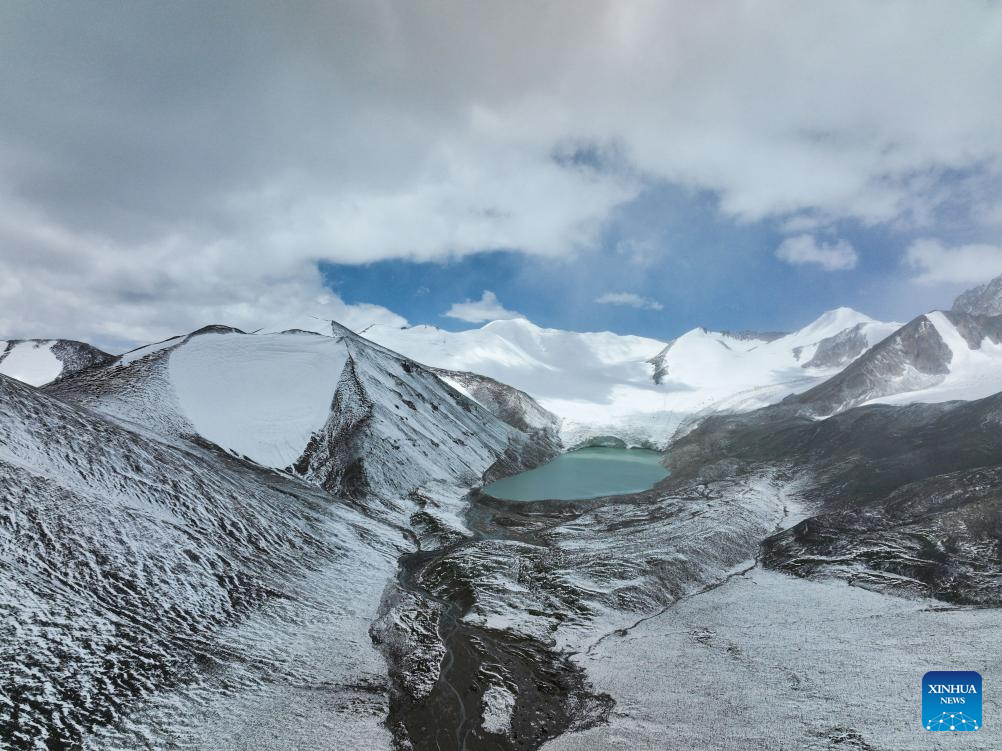
This photo taken on July 21, 2022 shows a view of the Mount Geladandong in the source region of the Yangtze River in northwest China's Qinghai Province.
The ecological environment in the Sanjiangyuan National Park in northwest China's Qinghai Province has continued to improve since the establishment of the national park in 2021, with water conservation capacity increasing by more than 6 percent annually, according to a newly released report on the park's development.
The park delivers over 60 billion cubic meters of high-quality freshwater downstream every year, and the grassland coverage and grass yield in the park have increased by over 11 percent and 30 percent, respectively, according to the report. (Xinhua/Zhang Long)
XINING, Dec. 27 (Xinhua) -- The ecological environment in the Sanjiangyuan National Park in northwest China's Qinghai Province has continued to improve since the establishment of the national park in 2021, with water conservation capacity increasing by more than 6 percent annually, according to a newly released report on the park's development.
The park delivers over 60 billion cubic meters of high-quality freshwater downstream every year, and the grassland coverage and grass yield in the park have increased by over 11 percent and 30 percent, respectively, according to the report.
Located on the Qinghai-Tibet Plateau, the Sanjiangyuan region serves as the headwaters for the Yangtze, Yellow and Lancang rivers, and is known as the "Water Tower of Asia."
In 2021, the Sanjiangyuan National Park, along with other four parks, was officially designated as China's first batch of national parks. The park has a total area of 190,700 square km, with an average altitude exceeding 4,700 meters.
According to Losang Tsering, chief engineer of the Sanjiangyuan National Park Administration, the park has prioritized ecological restoration over the years, focusing on ecosystems such as glaciers and snow-capped mountains, high-altitude grasslands and meadows, alpine wetlands, forests and bushes, and habitats for rare and endangered wildlife.
Among the notable achievements of the restoration efforts, 195,000 mu (13,000 hectares) of degraded grassland has been restored and 110,000 mu of land has undergone treatment for desertification control. The Tibetan antelope population has grown from less than 20,000 to over 70,000, the chief engineer said.
The Sanjiangyuan region is a typical representative of the alpine ecosystem and serves as an alpine biological germplasm bank, making it a crucial ecological security barrier in China. ■

This aerial photo taken on July 21, 2022 shows the glaciers and lake in the source region of the Yangtze River in northwest China's Qinghai Province.
The ecological environment in the Sanjiangyuan National Park in northwest China's Qinghai Province has continued to improve since the establishment of the national park in 2021, with water conservation capacity increasing by more than 6 percent annually, according to a newly released report on the park's development.
The park delivers over 60 billion cubic meters of high-quality freshwater downstream every year, and the grassland coverage and grass yield in the park have increased by over 11 percent and 30 percent, respectively, according to the report. (Xinhua/Zhang Long)

This aerial photo taken on June 15, 2023 shows a view of Mount Anyemaqen in Golog Tibetan Autonomous Prefecture, northwest China's Qinghai Province.
The ecological environment in the Sanjiangyuan National Park in northwest China's Qinghai Province has continued to improve since the establishment of the national park in 2021, with water conservation capacity increasing by more than 6 percent annually, according to a newly released report on the park's development.
The park delivers over 60 billion cubic meters of high-quality freshwater downstream every year, and the grassland coverage and grass yield in the park have increased by over 11 percent and 30 percent, respectively, according to the report. (Xinhua/Zhang Long)



